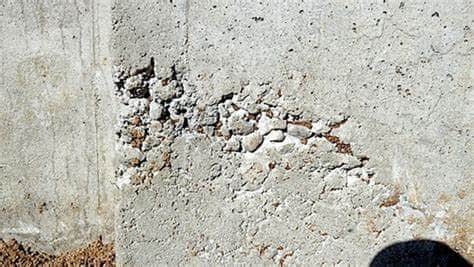How To Treat Honeycomb In Concrete In Vista?

- One of the primary causes of honeycombing in concrete is an improper mix design. When the ratio of water to cement is not balanced, or when the mix lacks sufficient fine aggregate, it can result in poor workability, making it difficult to consolidate the concrete properly. To prevent honeycombing, it’s crucial to follow a well-designed mix proportion that meets the specific requirements of your project. Ensure that you use high-quality materials and adhere to recommended water-cement ratios to achieve a dense, well-compacted concrete mix.
- Proper vibration is essential during the concrete pouring process to eliminate trapped air and ensure the mixture fills all voids, preventing honeycombing. Utilize adequate vibration techniques and equipment, such as internal vibrators or external vibrators, to compact the concrete thoroughly. Pay close attention to corners, edges, and areas near formwork, as these are more susceptible to honeycombing due to poor compaction.
- Inadequate or poorly maintained formwork can also contribute to honeycombing issues. Ensure that formwork is properly aligned, securely fastened, and well-braced to prevent any leakage or misalignment that can result in air pockets in the concrete. Additionally, use appropriate form release agents to facilitate easy removal and prevent concrete from adhering to the formwork surfaces.
- Curing plays a significant role in preventing honeycombing and ensuring concrete’s long-term durability. Immediately after placing and finishing the concrete, implement proper curing techniques such as water curing, curing compounds, or curing blankets. These methods help maintain the right moisture levels and temperature conditions, allowing the concrete to gain strength and reduce the risk of surface defects, including honeycombing.
- In some cases, despite best efforts, honeycombing may still occur. It’s essential to address these issues promptly to prevent further deterioration and maintain the structural integrity of the concrete. Repair and patch the affected areas using suitable concrete repair materials and techniques. This may involve chipping away the damaged concrete, applying a bonding agent, and then filling the voids with a compatible repair mortar or grout. Properly curing the repair is crucial to ensure its longevity and performance.
FAQs
Can Honeycombing Be Prevented Entirely?
While it’s challenging to eliminate honeycombing entirely, following the tips mentioned in this article can significantly reduce the likelihood of honeycombing in concrete structures.
How Can I Determine The Right Mix Design For My Concrete Project?
Consult with a structural engineer or a concrete expert who can analyze the specific requirements of your project and recommend an appropriate mix design.
What Are The Consequences Of Ignoring Honeycombing Issues In Concrete?
Ignoring honeycombing problems can lead to reduced structural integrity, aesthetic defects, and potential durability issues in concrete structures, which may necessitate costly repairs in the future.
Conclusion
Honeycombing in concrete can be a detrimental issue that affects both the appearance and structural integrity of a construction project. However, by adhering to proper mix design, using adequate vibration techniques, ensuring consistent formwork, implementing proper curing, and addressing any honeycombing issues promptly, you can significantly reduce the risk of this problem. Remember that prevention is key, and investing time and effort in preventing honeycombing from occurring in the first place can save you from costly repairs and maintenance down the road. For more information, contact Concrete Contractor Vista at (760) 313-6116.